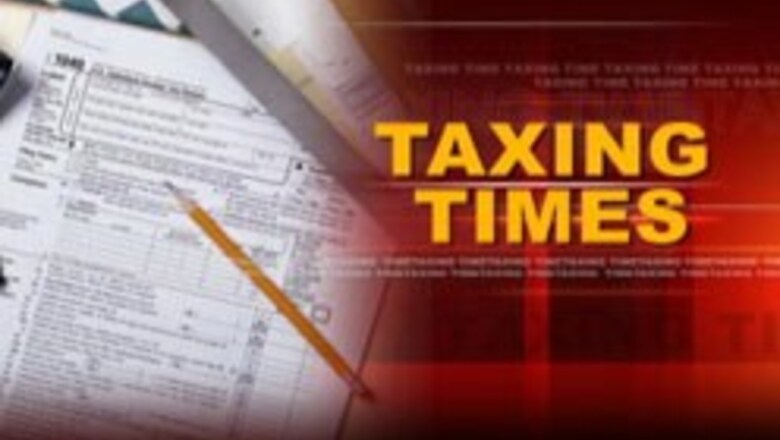
views
New Delhi: As the month of July approaches, taxpayers get ready to file their income tax returns. The procedure for each individual taxpayer is to fill Form 16 and Form No16A (tax deducted on Other Income).
To avoid last minute rush one must keep the necessary documents ready, well ahead of the stipulated last date. An individual whose taxable income during a financial year exceeds the exemption limit of Rs 1 lakh (Rs 1.35 lakh in case of females and Rs 1.85 lakh in case of senior citizens) has to file in tax returns.
Which ITR Form is applicable to you?
With the introduction of new income tax return forms based on nature of income earned during the year, one needs to know relevance of each return form and select the right form.
ITR 1: This form can be used only by an Individual having a salary and interest income. Form ITR-1 cannot be used if the individual has any income under other heads like:
- Property rental income
- Capital gains
- Dividend income from shares of foreign companies (which is not tax free in India)
- Winning from lotteries or any other prize money
Thus, even under the head “Income from Other Sources”, if the taxpayer has any income other than interest income then he cannot use ITR 1.
On the web site of the IT Department, there are two versions of ITR 1 available for downloading. Version 1 is two pages and Version 2 is three pages, long.
Both versions have additional pages of notes that serve as guidance to the taxpayer, when filling up the form. The font size seems to be the only difference between the two versions though.
It may be noted that this form is likely to be of use to a very limited number of taxpayers.
Most salaried taxpayers have income from other heads as well as income from sources other than interest (which would be chargeable to tax under the head 'Income from Other Sources'). Therefore, one can only wonder about the actual utility of this form.
PAGE_BREAK
ITR 2: This form has to be used by Individuals/ HUFs having income from any source other than business or professional means. Thus, this form is to be used if, besides salary and interest income, the Individual / HUF has income from house property or capital gains (short or long term), or income from other sources.
This form is 12-pages long.
However, out of the 12 pages, six pages are only by way of guidance notes. The actual form is only six-pages long.
ITR 3: This form is to be used by those Individuals/ HUFs who are partners in a partnership firm and who do not have any proprietary business or profession. This form is 14 pages long. However, out of the 14 pages, seven pages are only by way of guidance notes. The actual form is seven pages long.
ITR 4: This form is to be used by Individuals/ HUF having a proprietary business or profession. Thus, any person who has his own business/profession (even if he is also a partner in a partnership firm), then he would have to use ITR 4. This form is 30 pages long. However, out of the 30 pages, 10 pages are by way of guidance notes. The actual form is therefore 20 pages long.
ITR 5: This form is to be used by Firms/ AOPs/ BOIs to file their returns. It is a 22-page Form with 30 schedules to it. In addition, there are 10 pages of guidance notes to help taxpayers fill up the form.
Apart from the details of the income and tax, this form also requires the taxpayer to fill in details of the FBT.
ITR 6: This form is to be used by companies to file their returns. It is a 24-page form with 34 Schedules to it. This form replaces the earlier Form no 1. In addition to 24 pages, there are nine pages of guidance notes to help taxpayers in filling up the form.
Apart from the details of the income and the tax, this form also requires the taxpayer to fill in details of the FBT.
ITR 7: This form is to be used by the Charitable Trusts / Political organizations. It is a 17 page Form with 17 Schedules to it. In addition to the 17 pages, there are eight pages of guidance notes to help taxpayers in filling up the form. Apart from the details of the income and the tax, this form also requires the taxpayer to fill in details of the FBT.
ITR 8: This form is to be used by those who are liable to file returns for fringe benefits and not the Return of Income. It is a four page form with three additional pages of guidance notes.
Change is generally met with resistance. The new ITR forms too may meet with resistance from some quarters. But, ultimately, we taxpayers will have to toe the government's line, and will have to learn to live with the same.
In the process though, some of us may suffer from heartburn!



















Comments
0 comment